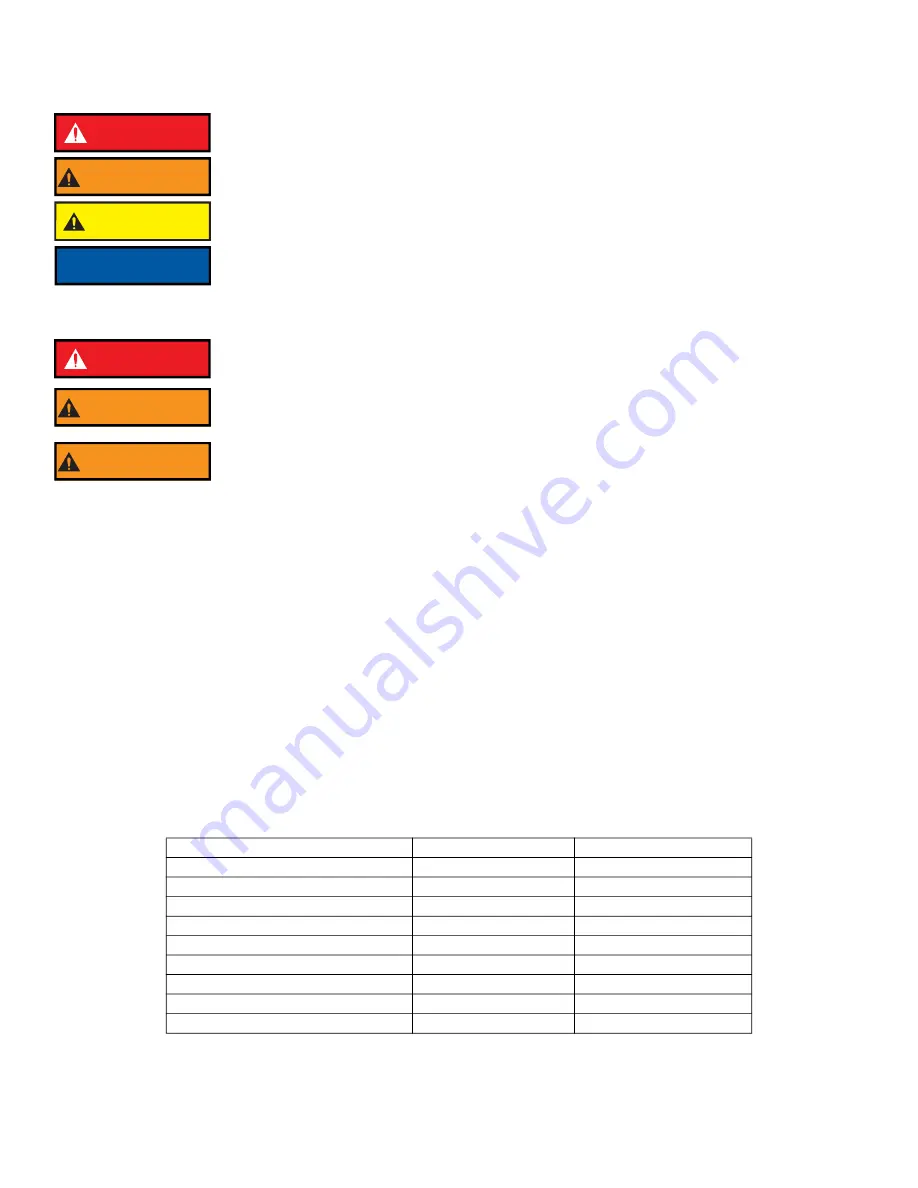
©Copyright Task Force Tips LLC 2003-2020
3
LIU-030 August 24, 2020 Rev10
1.0 MEANING OF SAFETY SIGNAL WORDS
A safety related message is identified by a safety alert symbol and a signal word to indicate the level of risk involved with a particular
hazard. Per ANSI Z535.6, the definitions of the four signal words are as follows:
2.0 SAFETY
This portable decontamination system can be used in potentially dangerous situations. The following must be observed at all times:
3.0 GENERAL INFORMATION
The PRO/pak Portable Foam System is a very versatile eductor-type foam application appliance. It can be used with 0.1%-1% Class A
foam concentrates for wildland, rural and urban fire suppression on Class A fuels (wood, paper, combustible materials). On Class A
materials the PRO/pak is intended to be used for direct extinguishment, overhaul, and wetting of fuels. Some foam concentrates are
corrosive, we recommend using only Class A concentrates that have received USDA and USFS approval.
On Class B materials, the PRO/pak is primarily intended to be used for vapor suppression. It can be used with 1% and 3% AFFF Class
B concentrates on flammable liquids that do not contain alcohol. It can be used with 3% and 6% Alcohol Resistant AFFF Class B
concentrates on flammable liquids containing polar solvents. It can also be used with 3% X 6% or 6% Class B foam concentrates.
Whenever possible, back up the PRO/pak with additional water/foam capabilities for added safety.
The Pro/pak can be used on ignited liquid fuels, but its foam application rate is very limited. Based on NFPA 11 this unit should not be
used on ignited Class B fuels with an area greater than 120 square feet (10 x 12 feet) or 11 square meters. The PRO/pak should not be
used on burning Polar Solvents with an area greater than 60 square feet (6 x 10 feet) or 5.5 square meters.
The PRO/pak is designed for Class A and Class B foam concentrates, but it has been used with other concentrates for other uses. If you
intend to use the PRO/pak for liquids other than Class A and Class B concentrates and water, we urge you to contact the Task Force
Tips Engineering Department. The use of other liquids may void the warranty and subject the user to hazards not addressed in this
manual. The user assumes all risks for non-intended uses.
3.1 SPECIFICATIONS
Figure 3.1
DANGER
DANGER indicates a hazardous situation which, if not avoided, will result in death or serious injury.
WARNING
WARNING indicates a hazardous situation which, if not avoided, could result in death or serious
injury.
CAUTION
CAUTION indicates a potentially hazardous situation which, if not avoided, could result in minor
or moderate injury.
NOTICE
NOTICE is used to address practices not related to physical injury.
DANGER
Lack of foam can place operator at risk of injury or death. Establish foam flow and adequate supply
of concentrate for the task before advancing into hazardous situations.
WARNING
Improper use of agent could result in death or serious injury, including damage to the eyes. To
reduce the risk of injury, avoid directing agent onto the faces of yourself and other personnel.
Always wear PPE, including eye protection, as directed by the AHJ.
WARNING
Improper use of foam or using the wrong type of foam can result in illness, injury, or damage to the
environment. Follow foam manufacturer’s instructions and fire service training as directed by the
AHJ.
US Units
Metric Units
Tank Capacity (to bottom of fill port)
2.5 gal
9.5 liters
Nominal Flow (all nozzles)
12 gpm @ 100 psi
45 l/min @ 7.0 bar
Weight Empty
11.5 lb
5.2 kg
Weight Full
30.1 lb
13.6 kg
Length x Width x Height
13.5” x 10.75” x 17”
345mm x 275mm x 430mm
Operating Pressure Max/Min
500/40 psi
40/3 bar
Straight Stream Nozzle Reach
50 feet @ 100 psi
15 meters @ 7.0 bar
Low Expansion Nozzle Reach
37 feet @ 100 psi
11 meters @ 7.0 bar
Medium Expansion Nozzle Reach
9 feet @ 100 psi
3 meters @ 7.0 bar






























